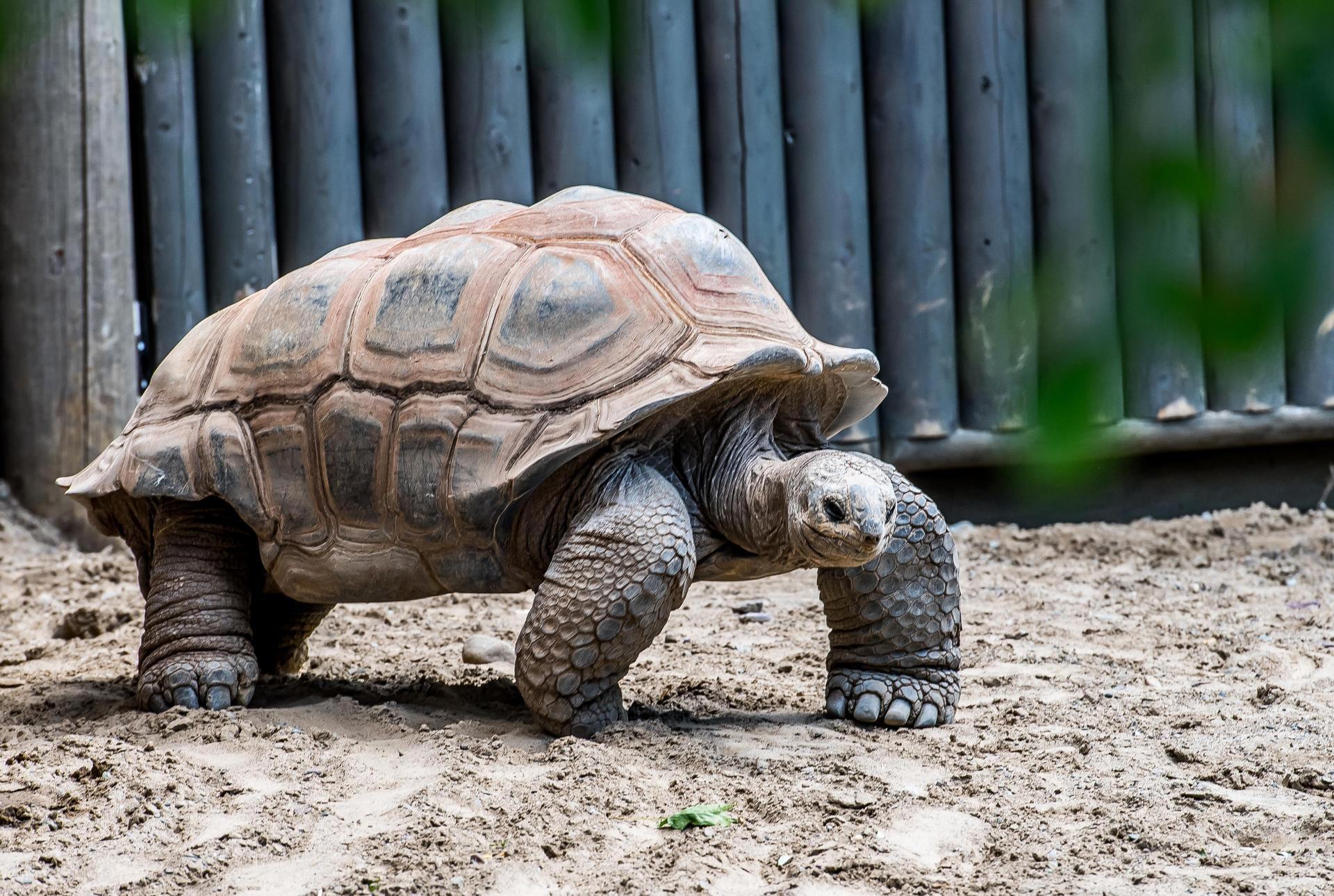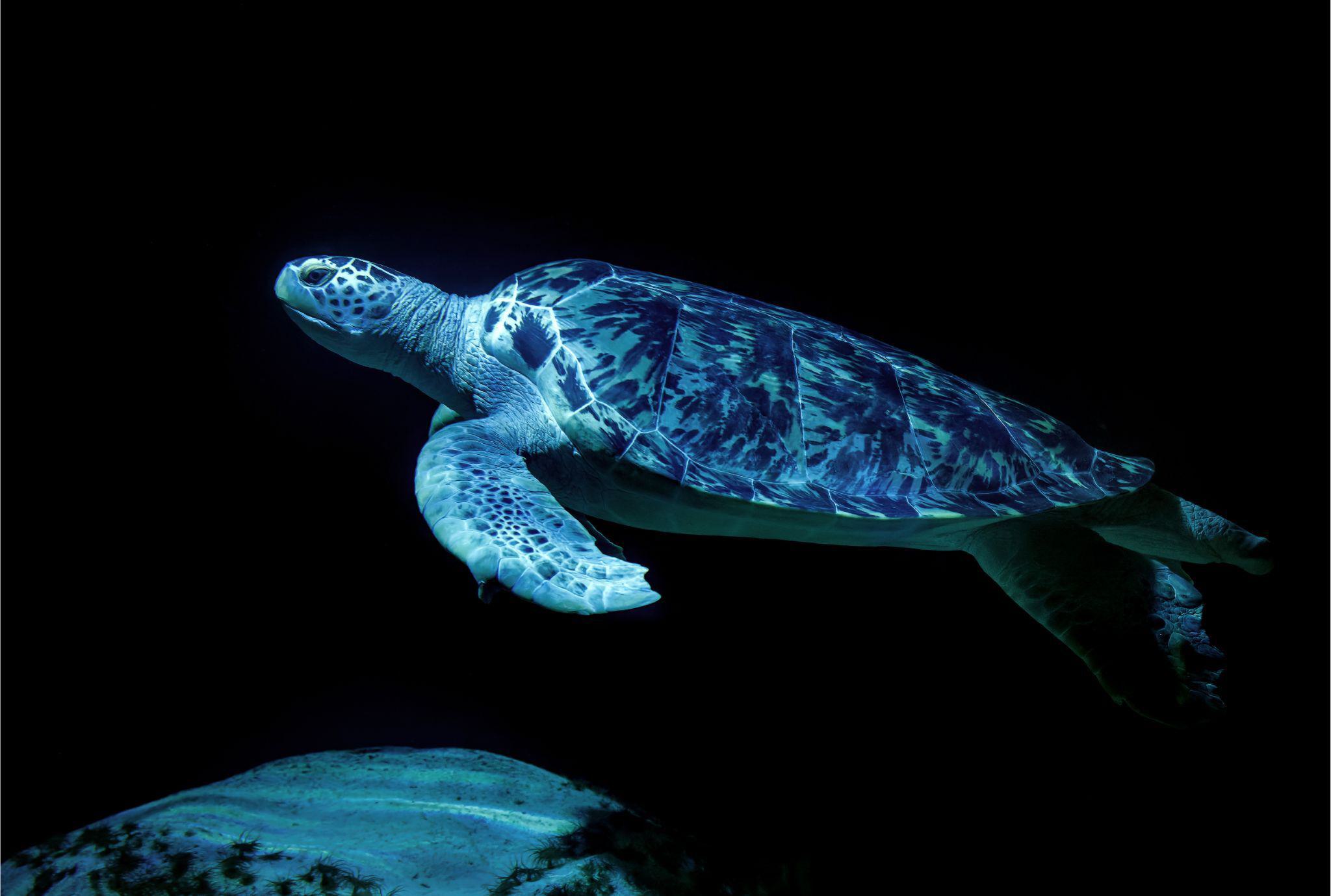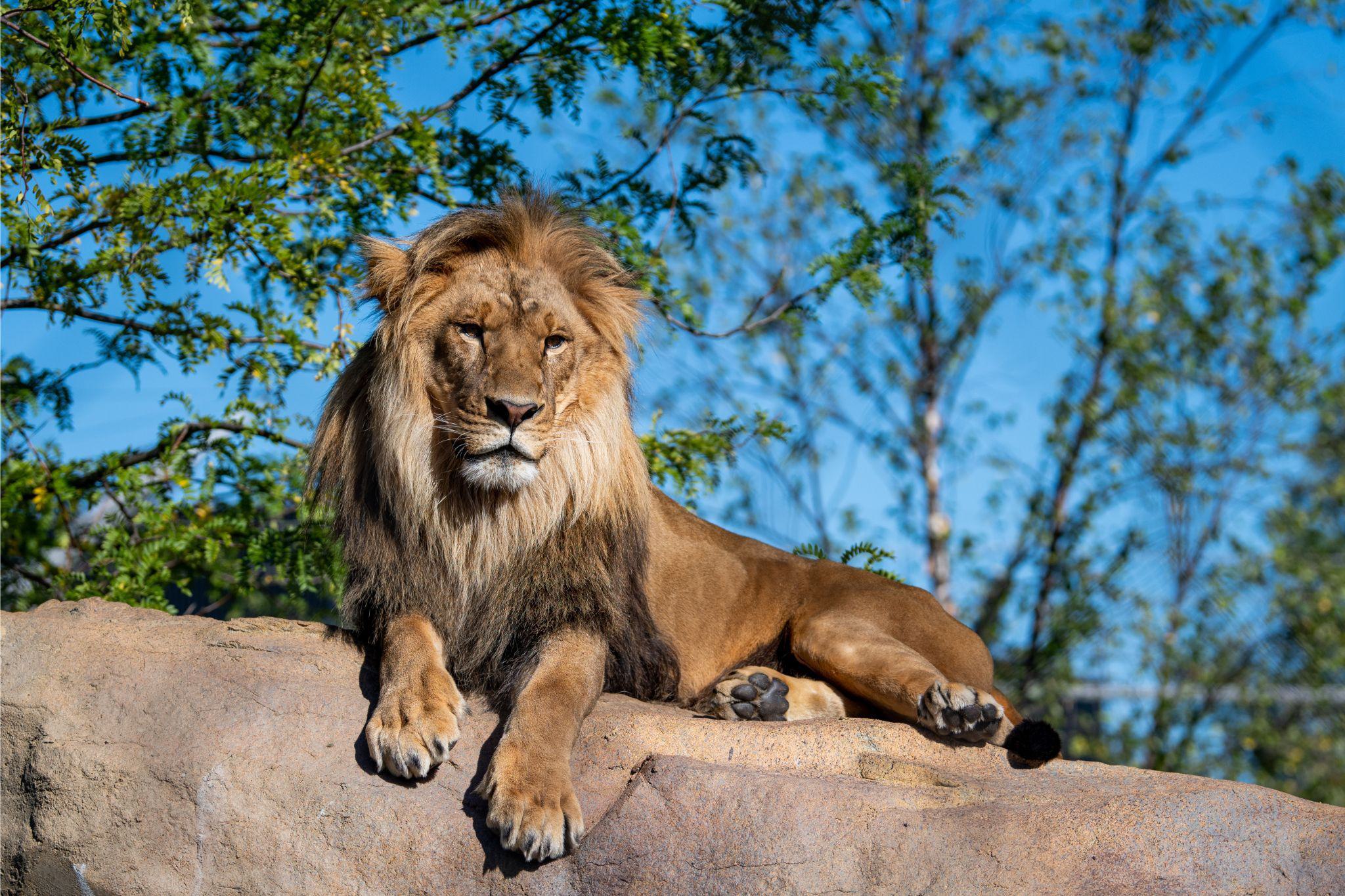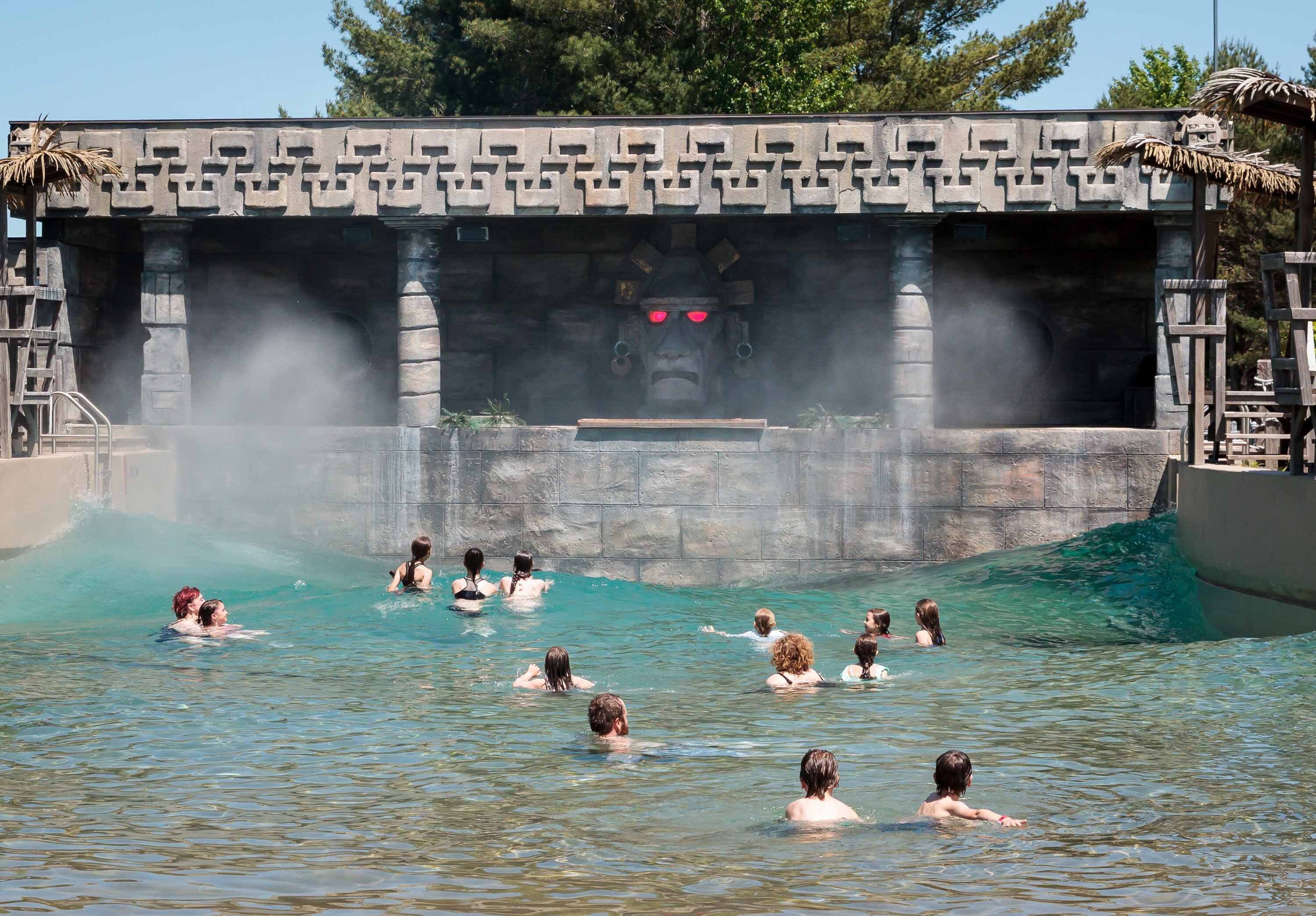Increasing the Pace to Preserve Our Turtles!
May 23 is World Turtle Day.
On this day we celebrate these so very unique creatures of the animal world. However, this date also brings about a very painful reminder that although they’ve survived on Earth for more than 200 million years, almost 60% of these carapace reptiles are now threatened by extinction in the wild.
At the Zoo de Granby, we presently shelter a few of the species. In fact, we incubate one of them and keep them safe in our laboratory until we can release them back into their natural habitat. Here, we hope to have you learn more about three of our superstars of the Day!


Spiny Softshell Turtles: An Endangered Species in Québec
As their name suggests, these turtles don’t have a keratin carapace: instead, their back is covered with a leathery still rather rigid skin. In fact, the peculiar appearance of their “carapace” brings to mind a pancake-like texture. Essentially aquatic, they have a long neck and their head has an elongated nose that serves as a snorkel when they’re submerged in water.
In Québec, spiny softshell turtles have been designated as being threatened by extinction. The species’ only population in the province is found in the Missisquoi Bay region (Lake Champlain), and we know of only one main spawning site in Québec, in the Rivière aux Brochets (Pike River). It’s estimated that there are only a few hundred adults left in the wild in this region. Habitat disruption, human activity and predation on eggs and hatchlings by urban wildlife (raccoons, skunks) are some of the major threats to their survival.
Since the late ’90s, the Zoo de Granby has been involved in the recovery of spiny softshell turtles in Québec, as well as protecting the nests and collecting the eggs since 2009 so that they can develop in a safe environment, protected from floods and predators. Over 2,300 small turtles have been protected during their incubation and returned to the wild after hatching. A colossal task accomplished by our teams of experts!

The Aldabra Tortoise, a True Vestige of a Prehistoric Era!
They can weigh up to 250 kg (560 lb) and live to be 190 years old, according to the Guinness Book of Records. Their appearance bears a vague resemblance to that of a dinosaur, and the pace of their activities reflects their abysmal slowness. Aldabra’s Tortoises (named after the Aldabra Islands in the Indian Ocean where they originate) are, in fact, the largest tortoises on Earth. These vegetarians rely on their long neck to reach higher vegetation. Like all turtles, they have no teeth, but their horny beak is sharp, making it easier to cut grasses and foliage for feeding.
The IUCN (International Union for Conservation of Nature) red list has classified the Aldabra tortoise as vulnerable. It’s estimated that there are some 150,000 turtles on the Aldabra Islands, making them quite unique on Earth, and this is why tourism is strictly controlled here. Although the population seems relatively stable today, it wasn’t always so. These turtles were particularly threatened at the end of the 19th century. At the time, humans introduced predators and competitors such as rats, dogs, goats and wild boar to the islands, thereby threatening the population of large reptiles. For a long while, they were also hunted by European merchants, who loaded them onto the decks of their ships.
At the Zoo de Granby, we house four Aldabra tortoises... three of which we don’t know the actual age! They arrived at the Zoo de Granby in October 1984, and their medical records state “date of birth undetermined.” We therefore know that they’re at least 40 years old, but we suspect that they’re even older, given that they were full-grown when they arrived!

Green Sea Turtles: Magnificent Ocean Vessels!
They owe their name not to the colour of their shell, but to the colour of their fat. They can be found in the Pacific, Atlantic and Indian Oceans, as well as in the Caribbean and the Mediterranean seas. Like all sea turtles, their front legs are transformed into long swimming paddles, which function like oars. Their hydrodynamic shells enable them to swim effortlessly and reach surprising speeds... underwater! Once a year, when they reach maturity, only the females will return heavily to the beach where they were born to lay their eggs. Males never set foot on dry land again for the rest of their lives.
This species is also considered to be in danger of extinction on the IUCN red list. Human presence, habitat modifications and the loss of egg-laying sites threaten the species. The mortality rate among juveniles is extremely high, especially as it takes about twenty years for a female to reproduce. Water pollution leads to degradation of their marine habitat and makes them more vulnerable, particularly through the absorption of plastic.
Since 2023, our Zoo Granby biologists have been participating in a vast conservation project for the protection of marine turtles in Martinique, with local partners (including the Cégep de Granby and the Université de Sherbrooke) and local partners, including Aquasearch. Our experts were able to observe the nocturnal egg-laying activities of these reptiles on the beaches, as well as helping to raise awareness with tourists about how turtles use beaches.


